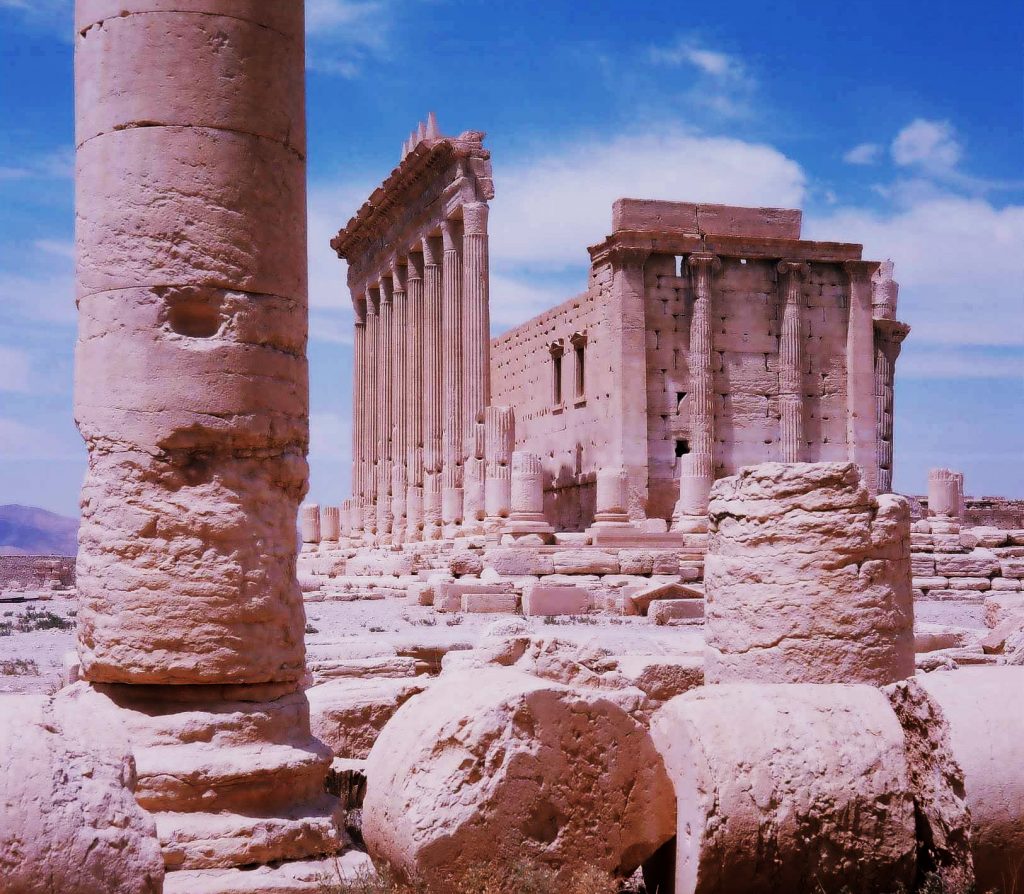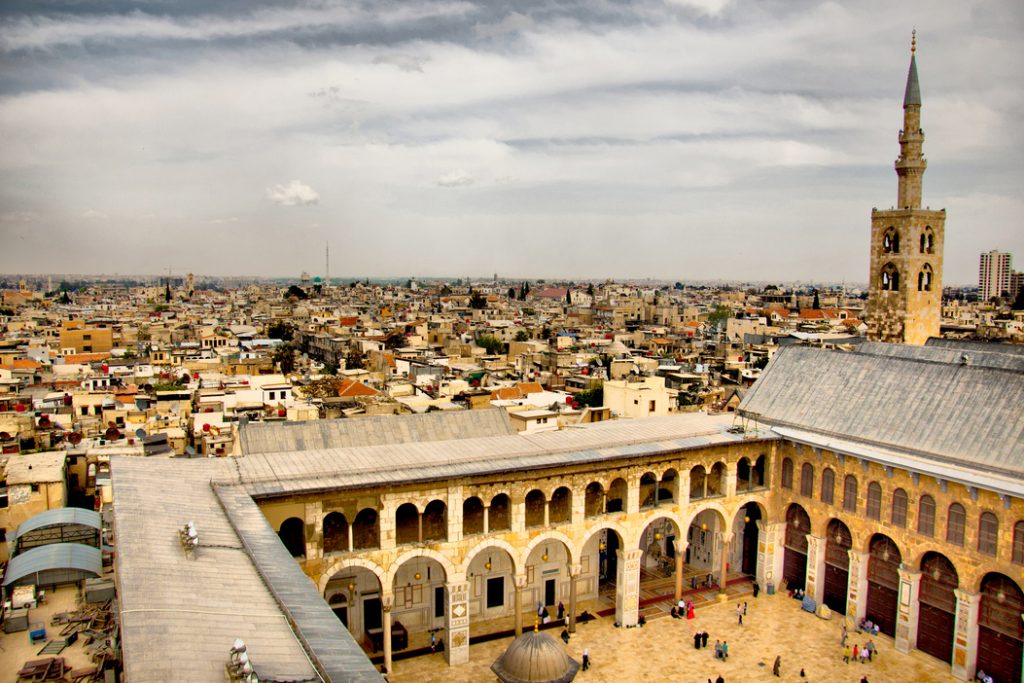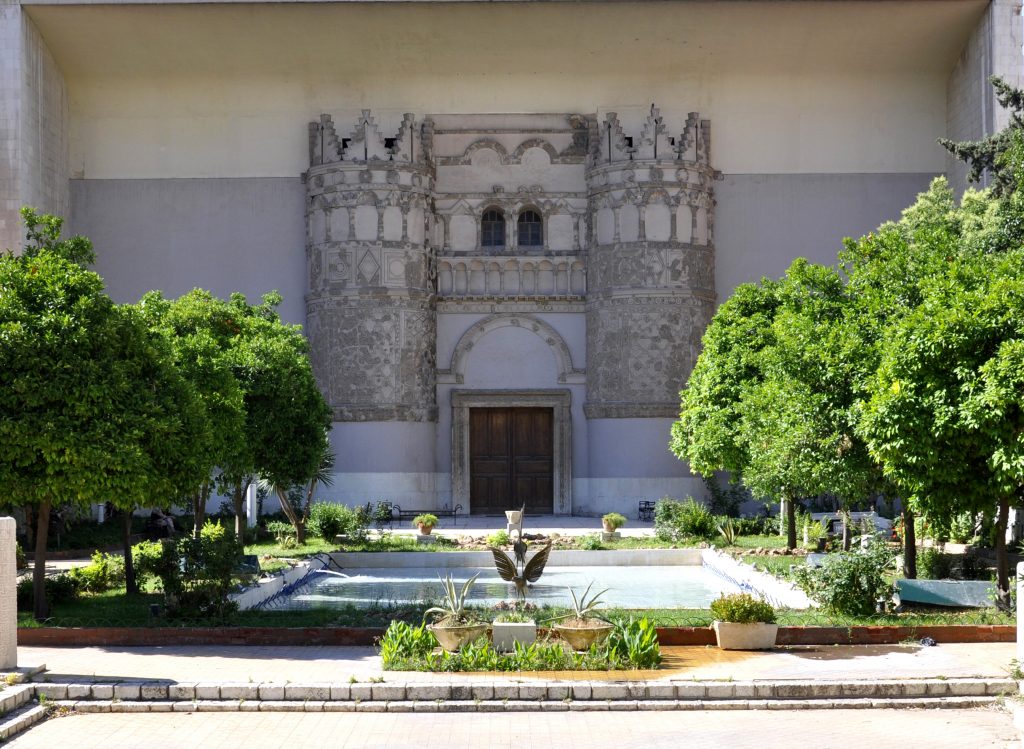Syrian Antiquities Breathe, but amid the Threat of Metal Detectors
By Khaled Hiatlih
Over the past decade, Syrian news has been filled with sorrowful reports of looting, destruction, and random shelling. The situation worsened when terrorist groups took control and carried out large-scale demolitions—most notably, the bombing of landmarks in the ancient city of Palmyra.
Since the fall of the brutal al-Assad regime in December 2024, Syria has entered a new phase filled with both challenges and hope for restoring its cultural and archaeological heritage. This heritage is a vital part of the Syrian people’s national identity and rich history, yet it has suffered from over 14 years of conflict, neglect, and destruction. This article reviews the current state of Syrian antiquities, the changes following recent political shifts, and the prospects for the future under the new administration.
Just two months after the brutal regime’s collapse, public spaces across Syria have become hubs of activity. Diplomatic efforts and political moves are underway to build a new state based on justice and equality, with the new administration embracing tolerance and moving past old divisions.
This renewed principle extends to the cultural heritage sector as well. Efforts are now underway to restructure this field, and the new administration’s keen interest is evident from the recent phases of liberation—starting from the northern regions toward Aleppo and then moving southward toward the capital, Damascus. In these areas, what was known as the Military Operations Administration has actively worked to protect Syrian museums and archaeological sites by deploying special forces to guard museums and other significant buildings in the liberated cities. Subsequently, a specialized director was appointed to lead the General Directorate of Antiquities and Museums and manage the sector, even though the position of Minister of Culture remains vacant—a clear indication of the special attention being paid to the cultural heritage sector.
Despite the general atmosphere of optimism—fueled by these administrative steps taken by the new government to support and enhance the museum and archaeological sectors—many reports paint a discouraging picture of the archaeological sector in different parts of the country. One major concern is the rising use of metal detectors for finding precious metals. These devices, which were once banned under the fallen regime, are now widely advertised on social media in various specifications and types. Consequently, some groups or individuals, driven by the lure of quick wealth, have hastily begun using these devices, and their use is spreading—particularly in the central and southern provinces.
Confirmed reports show a surge in illegal digging for gold using these devices in areas such as the countryside of Hama, northern Aleppo, the Damascus countryside in Eastern Ghouta, and further south in the provinces of Daraa and Quneitra. These reports harken back to the peak period of looting and indiscriminate excavation that afflicted Syrian cultural heritage sites during 2013–2014—in cities like Apamia, Mari, and Dura-Europos—where every meter of these ancient sites was ravaged. Many of these sites, are already on the World Heritage List or being considered for it, prompting UNESCO in 2013 to reclassify all registered Syrian sites onto the “List of World Heritage in Danger.” This list includes the cities of Damascus, Aleppo, Palmyra, Bosra, Qal’at al-Hosan, Saladin, and the so-called “Dead Cities” in northwestern Syria.
Regarding violations against museums, most incidents occurred during the early days following the collapse of the fallen regime, particularly in Syria’s coastal provinces. In Tartus, for instance, the Tartus Antiquities Directorate building was stormed—the doors were smashed and equipment stolen—although the museum itself remained guarded. Similarly, at the citadel of Arwad island, a break-in led to the theft of 38 archaeological artifacts and equipment. In the citadel of Al-Maraqib, the visitor center was breached, showcases were smashed, and various items were stolen. In the ancient Phoenician city of Amrit, illegal excavations have reportedly looted the tombs area.
Moving from the west to the far east of Syria, the transition of power took on a harder tone, although it also saw widespread looting and pillaging of all government institutions in the city of Deir ez-Zor following the withdrawal of the fallen regime’s forces and the subsequent takeover by the Kurdish Syrian Democratic Forces. In response, we—as volunteers—assembled a team to protect the museum and prevent theft or arson from affecting its buildings and warehouses, and fortunately, we succeeded.
The Deir ez-Zor National Museum, which once housed more than 21,000 archaeological artifacts, now finds itself in a critical state due to the ravages of war and neglect. Although most of its collections were safely transferred to Damascus during the crisis, the museum’s infrastructure is rapidly deteriorating. Damage is evident in broken windows and malfunctioning drainage systems that allow water to seep into the walls and foundations, as well as in the exhibition halls that have remained closed since 2012—displaying clear signs of neglect, with cracks in the roof, shattered windows, and remnants of display decorations or ornamental pieces left exposed to dust. The warehouses have been closed for years, and the condition of the stored archaeological and pottery pieces is unknown, given that the museum was previously used as a base by the forces of the fallen regime and by Iranian militias active in the area, not to mention the existence of several tunnels around the building.
The Damascus National Museum—considered the crown jewel of Syrian museums, the largest and richest in terms of artifacts and archaeological collections—is currently secure despite attempts by thieves to breach it on the night of the regime’s collapse. Thieves entered from the museum’s parking area beneath the building, triggering minor fires that were quickly brought under control thanks to the efforts of the guards and staff; however, all vehicles belonging to the Antiquities Directorate were stolen. Security personnel are now stationed at the museum to ensure its protection, and the visitors are permitted to access the museum’s garden and its outdoor exhibits.
The triumph of the Syrian revolution stands as one of the most significant events in contemporary Syrian history—a development that has touched all Syrian citizens and even extended its impact to neighboring and regional countries. Transitioning from the dark era of the Assad family’s rule, which lasted more than 50 years, to a state of normalcy—especially in the cultural heritage sector—is a challenging process in practical terms, given the numerous obstacles it faces. Issues such as weak national and international funding, a shortage of qualified personnel for reconstruction projects, and the loss of many vital documents and records have slowed this transition somewhat. Nevertheless, it is heartening that the events of the regime’s fall exceeded expectations and were far more positive than those in neighboring countries. This success provides a firm foundation upon which to rebuild the antiquities sector through the concerted efforts of Syrians both within and outside the country—a process that is already underway. The General Directorate of Antiquities and Museums is now holding intensive, regular meetings with specialists and archaeologists from various segments of society, both in Syria and abroad, to mobilize efforts and develop a comprehensive strategy for reviving the antiquities sector and addressing the significant challenges that require both national and international support.
Khaled Hiatlih is a Near Eastern archaeologist and cultural heritage specialist with 15 years of experience in the archaeological field in Syria. He has participated in many international projects and led initiatives specializing in cultural heritage documentation and the digitization of cultural properties and museum archives. Khaled has worked on heritage projects across Syria, including the rehabilitation of the Folk Museum (Azem Palace) in Damascus and the Syrian Mosaics Documentation Project.
Dedicated to the preservation of Syrian cultural heritage, Hiatlih has been tracking the illicit trafficking of Syrian archaeological artifacts and documenting the damage to Syrian heritage since the crisis started and has participated in cultural initiatives to raise public awareness and protect endangered Syrian heritage as a part of global human heritage.



